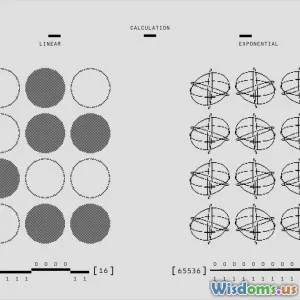
Why Do Levitation Illusions Keep Audiences Mesmerized for Centuries
9 min read Exploring why levitation illusions continue to captivate audiences throughout history and the psychology behind their timeless allure. (0 Reviews)
Why Do Levitation Illusions Keep Audiences Mesmerized for Centuries
Levitation—defying gravity and floating in mid-air—is an illusion that has fascinated humans for centuries. Despite advances in technology and entertainment, the spectacle of levitation illusions consistently captures the human imagination. But what is it about this seemingly impossible phenomenon that keeps audiences spellbound across generations and cultures? This article explores the history, psychological underpinnings, and artistic mastery that sustain the captivating power of levitation illusions.
The Ancient Allure of Levitation
Levitation illusions have roots stretching back thousands of years, intertwined with mysticism, religion, and spiritual practices. In many early cultures, stories of saints, yogis, and shamans supposedly floating above the earth symbolized transcendence and divine power. For example:
- Ancient Chinese Taoists reportedly practiced meditation techniques suggesting bodily lightness and suspension, often linked to spiritual enlightenment.
- Medieval Christian mystics were sometimes depicted as levitating during ecstatic religious experiences, reinforcing their sacred status.
These narratives planted early seeds of fascination and offered levitation as a metaphor for escaping earthly limitations. The mystical origins gave levitation an aura of wonder and the supernatural—a context in which illusions could vividly captivate audiences longing for explanation and mystery.
The Science and Craft Behind Levitation Illusions
Contrary to mystical beliefs, levitation illusions rely on clever manipulation of human perception, physics, and stagecraft. Magicians have refined these techniques over centuries, continually evolving them to exploit the gaps in our sensory processing. Some common levitation illusion methods include:
- Hidden Supports or Wires: Skilled use of nearly invisible wires or rigid rods concealed with careful lighting and wardrobe choices allows a performer to appear suspended.
- Optical Illusions: Strategic mirrors or backgrounds can make the support structures seem to vanish to the audience's eye.
- Misdirection: The magician draws attention away from mechanical devices or subtle props at crucial moments of the illusion.
Take Harry Houdini's famous "Floating Ball" illusion, where he suspended a lightweight ball seemingly in midair while it followed his hand's movement. This used hidden threads and carefully angled lighting.
These illusions showcase more than mechanical expertise—they demonstrate an acute understanding of how the human brain perceives spatial relationships. When done well, the levitation seems utterly genuine, pushing audiences to question what is real.
Psychological Why: Our Fascination With the Impossible
Levitation illusions resonate deeply because they confront foundational human experiences—gravity and physical laws that everyone observes daily. J.F. Kennedy once said, “There are more things in heaven and earth, Horatio…” This yearning for the extraordinary shapes much of our cultural imagination.
Several psychological theories help explain why levitation illusions remain so compelling:
- Suspension of Disbelief: Audiences willingly immerse themselves in performances to experience awe and wonder, temporarily accepting what defies logic.
- Violation of Expectations: Levitation contradicts what we know about gravity, creating cognitive dissonance. This tension activates curiosity and amazement.
- Priming and Cultural Influence: Exposure to stories of magical levitation primes viewers to interpret these acts through enchanted lenses, reinforcing fascination.
Psychologist Steven Jay Lynn noted that the magic lies in the interplay between perception and suggestion, making levitation a prime example of how easily humans can be enchanted by illusions that tap into deep-seated beliefs about the world.
Cultural Impact and Modern Adaptations
Levitation illusions have transcended stage magic to influence art, media, and technology for centuries. Here are some notable examples showing its enduring appeal:
- Stage Magic Shows: Modern magicians like David Copperfield have pushed the boundaries even further—for example, making himself levitate or fly over the stage.
- Film and Television: Levitation scenes are often used to evoke mystery or supernatural power. Iconic movies like The Exorcist and Harry Potter use levitation to symbolize otherworldly forces.
- Digital and Virtual Reality Experiences: New technologies allow users to experience simulated levitation, keeping the illusion fresh by merging it with interactive entertainment.
Despite these transformations, the core fascination persists because levitation summons fundamental questions about reality, control, and transcendence. It appeals to a universal human desire to overcome gravity, to fly, and to access realms beyond normal existence.
Why Levitation Illusions Endure in a Skeptical World
In an age flooded with information and debunked myths, one might expect illusions like levitation to lose their charm. Yet, their popularity remains strong. This endurance can be attributed to multiple factors:
- Emotional Engagement: Unlike passive media, live levitation performances involve direct audience engagement, making the mystery palpable.
- Timeless Themes: Levitation touches timeless human themes—freedom, wonder, and the inexplicable.
- Mastery of Illusionists: Skilled performers continuously renew the spectacle by innovating techniques and storytelling.
Magician Teller said, “Magic’s greatest power is empathy. Levitation illusions let us experience that pure mode of astonishment, something everyone can feel.” In other words, levitation illusions tap into a universal emotional experience that transcends eras and cultures.
Conclusion: Levitation’s Lasting Spell
Levitation illusions captivate audiences because they blend human curiosity, emotional longing, artistic mastery, and psychological engagement. Rooted in ancient spiritual traditions and refined by expert craftsmanship, these illusions challenge our understanding of reality by defying gravity—the one force that governs everyday life with perfect consistency.
Audiences, whether in medieval cathedrals, 19th-century theaters, or contemporary arenas, experience a unique thrill: the ephemeral defiance of physics and the tantalizing glimpse into the impossible. This experience nourishes a timeless wonder that ensures levitation illusions will continue to mesmerize—floating in our imagination for centuries to come.
References & Further Reading:
- Lamont, P., & Wiseman, R. (1999). Magic in Theory: An Introduction to the Theoretical and Psychological Elements of Conjuring. University of Hertfordshire Press.
- Kuhn, P. (1988). The Early Recorded Magic and Illusions: An Illustrated Chronological History. Dover Publications.
- Macknik, S. L., & Martinez-Conde, S. (2010). Sleights of Mind: What the Neuroscience of Magic Reveals about Our Everyday Deceptions. Henry Holt and Company.
- Teller, J. (2017). Talks at Google: The Magic and Psychology of Illusions.
- Historical accounts of mystics and levitation from various traditions.
Thank you for exploring why the art of levitation continues to captivate humanity. May this knowledge inspire a newfound appreciation for the artistry and psychology behind one of our oldest and most enchanting illusions.
Rate the Post
User Reviews
Popular Posts















